#2nd century c.e.
Explore tagged Tumblr posts
Text
Author & Timestamp: Sonja Anderson April 3, 2024
Extract:

The marble statue likely depicts the Greek god Apollo and decorated a fountain in Philippi. Greek Ministry of Education In the ancient Greek city of Philippi, researchers have discovered the head of a god: [...] they have identified the marble face as the mythological Apollo, son of Zeus and Leto.
Students and faculty from Greece’s Aristotle University of Thessaloniki unearthed the statue in 2023, according to a Google-translated statement from the Greek Ministry of Culture. As Anastasios Tantsis, an archaeologist at the university, tells All That’s Interesting’s Kaleena Fraga, “The moment of the discovery was thrilling.”
“[The students] were really enthusiastic,” he adds.” We believe that even though these are moments of special importance for us too, sharing them with our students adds to the thrill.”
[...]
Today, the city is still rich with archaeological treasures. In 2022, fragments of a statue of Hercules were unearthed at the site. This statue, which may have once held a club and lion’s head, dates to around the second century—just like the newly discovered marble Apollo. Researchers think both artifacts once adorned the fountain.
However, the Apollo and Hercules sculptures are both much older than the fountain, which “took its final form during the eighth to ninth centuries,” writes the culture ministry. So why did the fountain’s creators, who would have been medieval Christians, incorporate Greek deities into their design?
Perhaps Hercules’ heroic story—in which he chooses virtue over vice—could have been reworked for a Christian audience, as Tantsis tells All That’s Interesting. Still, even if this were the case, “there is no such evidence for Apollo,” who was worshiped for his powers of light, music and prophecy, among other things.

Unlike the previously discovered Hercules statue, only the head of this Apollo statue has been found. Greek Ministry of Education
#ancient greece#ancient greek#archaeology#classical studies#history#ancient#ancient history#antiquity#archaeological discoveries#archaeological site#Philippi#apollo#greek gods#Aristotle University of Thessaloniki#statue#2nd century c.e.#3rd century c.e#second century c.e.#third century c.e.#ruins#archaeological news#hercules#heracles#marble#medieval christianity#historical continuity#cultural continuity#Apollon#article#smithsonian
7 notes
·
View notes
Text
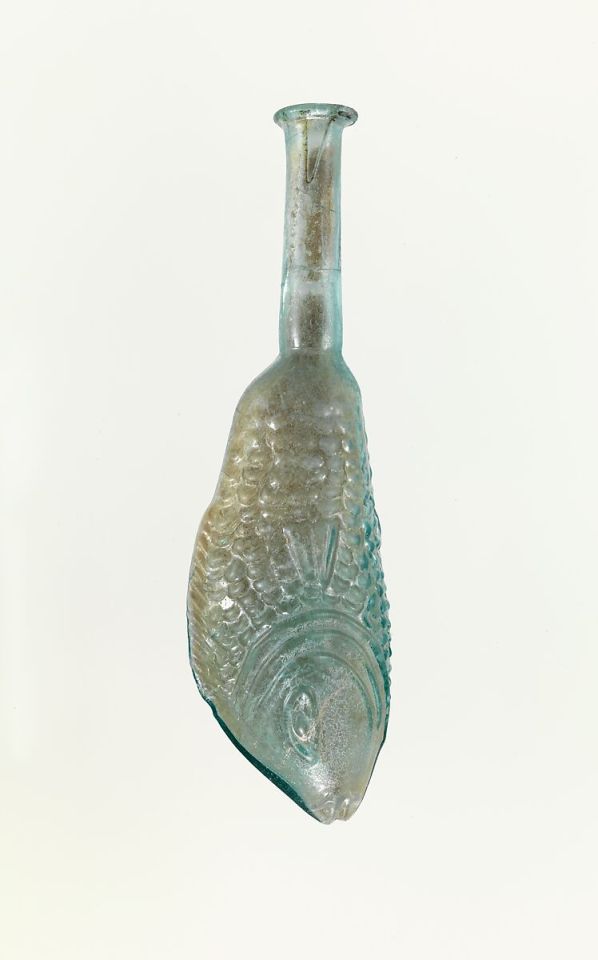
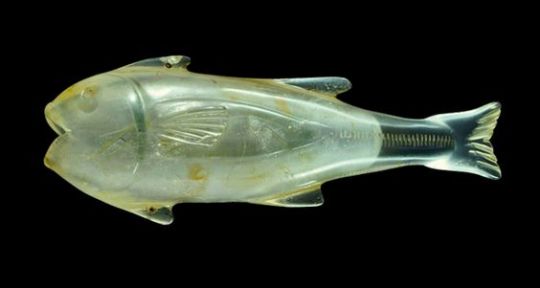
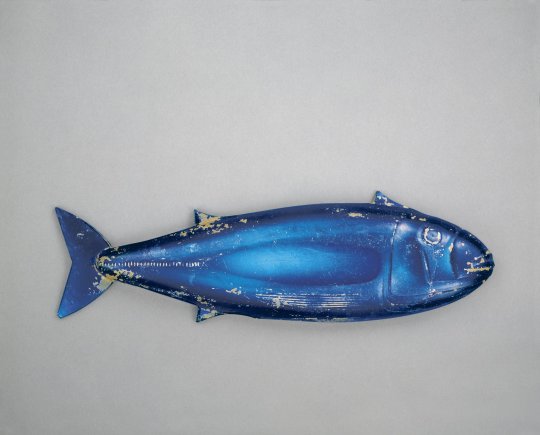
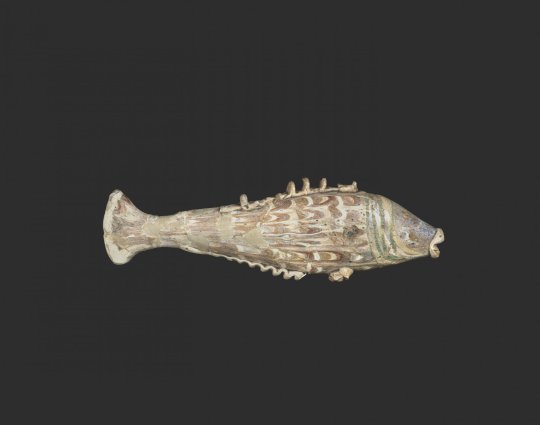
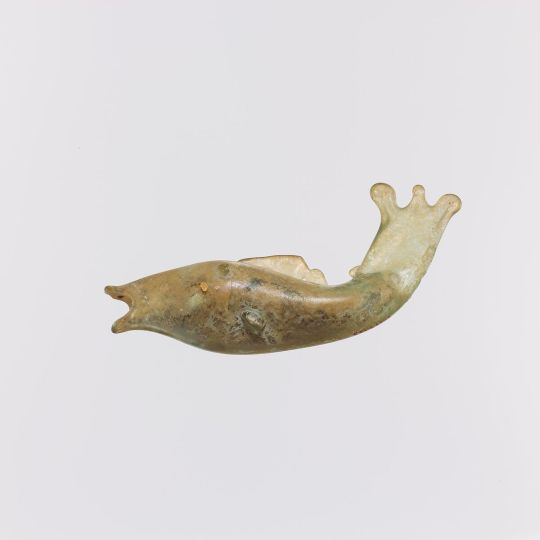
Roman glass bottle in the shape of a fish, 1st–2nd century CE.
Roman carved rock crystal fish, 1st Century CE.
Roman glass dish cover in the shape of a fish, 1-99 CE
Glass fish, Eastern Mediterranean during the Roman Empire -199 CE or later
Roman glass bottle in the shape of a fish, 4th century C.E.
#ANOTHER FAILURE TO STAY ON THEME but there is a great deal of comfort and delight in looking at ancient animal shaped objects#glass art#ancient rome#fish#roman empire
1K notes
·
View notes
Text

Archaeologists Uncover 'Prison Bakery' in Pompeii
An ancient bakery operated by slaves has been discovered in the ruins of Pompeii, the Pompeii Archaeological Park said in a statement released Friday.
Enslaved people and donkeys were locked up together and used to power a mill to grind grain for bread, according to details of the discovery provided by the park.
The site consists of a narrow room with no external view but only small, high windows covered by bars through which minimal light passed. There were also indentations in the floor “to coordinate the movement of the animals, forced to walk around for hours, blindfolded,” the statement said.
The discovery was made in the Regio IX section of the popular tourist site, which is also an ongoing archaeological dig. The area is currently being excavated as part of a larger project designed to secure and maintain previously excavated areas of the Roman city.
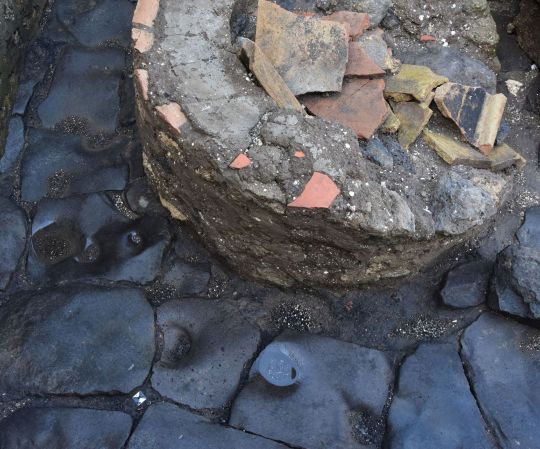
Archaeologists discovered the bakery while excavating an ancient Pompeiian home that was being renovated when Mount Vesuvius erupted in 79 C.E., covering the city of Pompeii with ash.
The bodies of three victims of the eruption were found in recent months, believed to be residents of the home rather than slaves. The house was divided into a residential section with “refined frescoes” on one side, and a commercial bakery on the other.
Next to the bakery was the dimly lit prison area, Pompeii Archaeological Park director Gabriel Zuchtriegel said in an interview posted on the site’s YouTube channel.

“What has emerged is testimony of the backbreaking work to which men, women, and animals were subjected in the ancient mill-bakeries,” he added.
Zuchtriegel said these prison bakeries were previously described by the Roman writer Apuleius in the 2nd century C.E., in his novel “Metamorphoses” (also known as “The Golden Ass”), in which the protagonist, Lucius, “transformed into a donkey and was sold to a miller.” Zuchtriegel said the episode was based on the writer’s direct knowledge of the animals and humans living and working together.

The newly discovered prison area had no doors to the outside, only to the inner atrium.
“It is, in other words, a space in which we must imagine the presence of people of servile status whose owner felt the need to limit the freedom of movement,” Zuchtriegel said.
“It is the most shocking side of ancient slavery, the side devoid of relationships of trust, where it was reduced to brute violence, an impression which is fully confirmed by the closing of the few windows with iron grates.”
Archaeologists also believe that the indentations in the slab flooring were not made by repetitive movement but were carved to prevent the donkeys and other animals from slipping on the pavement and to force them to only walk in a circular motion to grind the grain, almost like a clockwork mechanism.
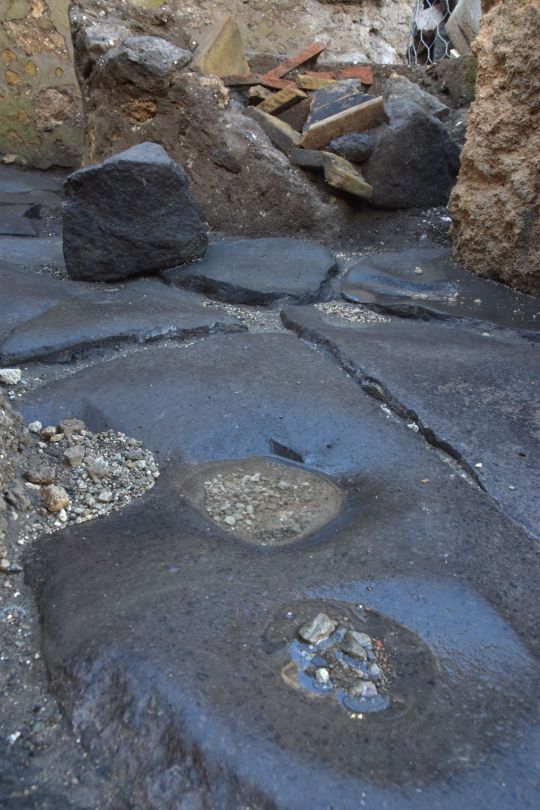
“The iconographic and literary sources, in particular the reliefs from the tomb of Eurysaces in Rome, suggest that a millstone was normally moved by a couple made up of a donkey and a slave,” Zuchtriegel said.
“The latter, in addition to pushing the grindstone, had the task of encouraging the animal and monitoring the grinding process, adding grain and removing flour.”
The site will complement an exhibition that opens December 15, called “The Other Pompeii: common lives in the shadow of Vesuvius,” which is dedicated to what Zuchtriegel calls the “myriad of individuals often forgotten by historical chronicles, such as the slaves, who constituted the majority of the population and whose work contributed significantly to the economy, but also to the culture and social fabric of Roman civilization.”
By Barbie Latza Nadeau.
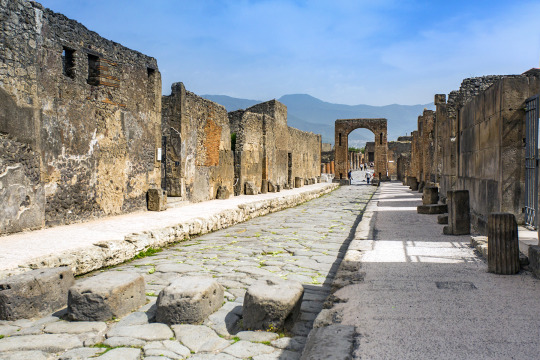
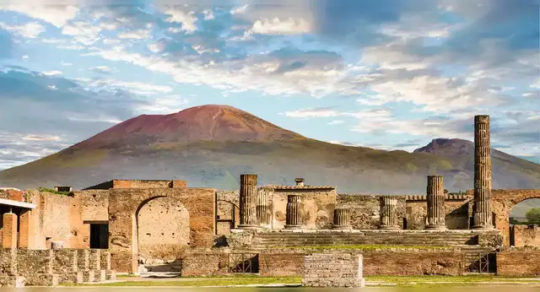
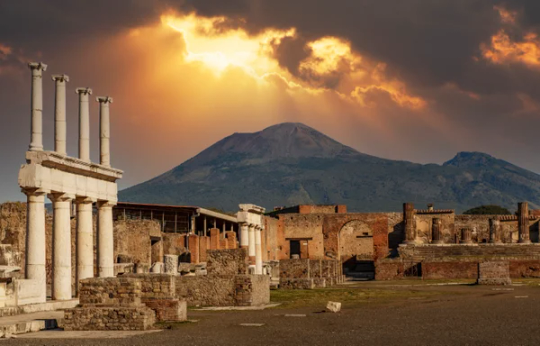
#pompeii#Archaeologists Uncover 'Prison Bakery' in Pompeii#ancient artifacts#archeology#archeolgst#history#history news#ancient history#ancient culture#ancient civilizations#roman history#roman empire#mount vesuvius
82 notes
·
View notes
Text
Magical Gemstones: An Abridged Guide
Magical gemstones are a type of talisman made of semiprecious stones —such as hematite, carnelian or amethyst— that were worn set in rings or as pendants and their size ranges from 1.5 cm to 3 cm.These gemstones haven't magical, protective characteristics because of the nature of the gem itself but because the representations of Gods and holy names carved conceded them virtues through holy dynamis: This is, among other things, the inherent power of divine names and/or their representations.
These depictions are normally inverted (negative) This, together with the fact that some of the gems show a certain degree of worn indicates that they were manipulated in some way—probably rubbed or even licked, in order to increase their efficacy—proves that they were not conceived as seals but as amulets or talismans.
A magical gemstone, to be considered as such, should have one or more of the following elements:
An iconographic language generally belonging to syncretic Gods or that combines Gods from different origins.
Charakteres (magical signs. They can be planetary, protective, etc.)
Voces magicae (Words of power and phrases whose formulation and structure may hide secret, sacred names of Gods as well as prayers or incantations dedicated to them, sometimes with the intention of controlling their emanations and daimonēs) and logoi (magical names, permutation of magical names and vocals).
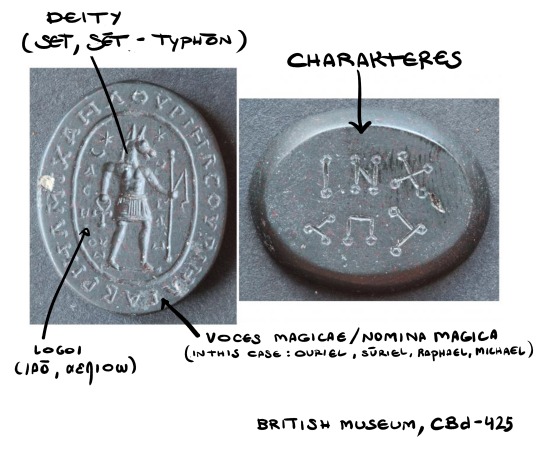
The practice and use of magical voices was transmitted orally across the eastern Mediterranean, but it wasn't until the early 1st century b.c.e. the practice began to be included in written form. The abundance of amulets and gems with magical names and signs are evidence of this change of paradigm.
In addition, elements are usually complemented by two structural features:
The gemstone is engraved on both the obverse and the reverse, sometimes even on the edge.
The inscription appears directly and not in mirror writing.
These magic gemstones, in addition, can be magical gemstones stricto sensu and amuletic gems. The latter differ from the former in:
That the iconographic patterns they contain are explicitly described as belonging to amulets in textual sources such as Posidippus's Lithika
They bear a prophylactic inscription, usually "diaphylasse" (protect me!), "sōzon" (save me!) or "Heis Theos" (One God).
Its production began during the late Hellenistic period, but it was not until the 2nd and 4th centuries c.e. that it reached its apogee. Magical gemstones' imagery demonstrates the diversity and plurality of Greek, Roman, Egyptian, Egyptian, Christian, Gnostic and Jewish representations and ideas from the Mediterranean from the Roman period, as well as the popularity and diversity of magical activities and practices.
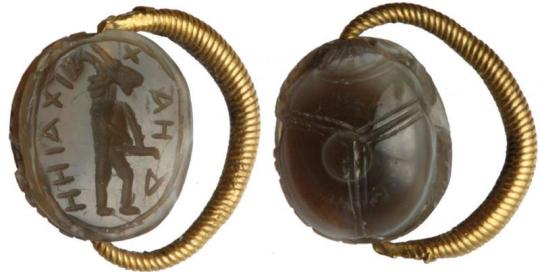
These magic gemstones were rarely used for evil purposes, such as harming someone. Their most common use was to offer protection or solve personal health problems: those showing an ibis tied by an altar and including the command "pésse!" (digest) were used to heal indigestion and other stomach problems; others, depicting a uterus, offered represented a womb, offered protection during childbirth and guaranteed fertility.
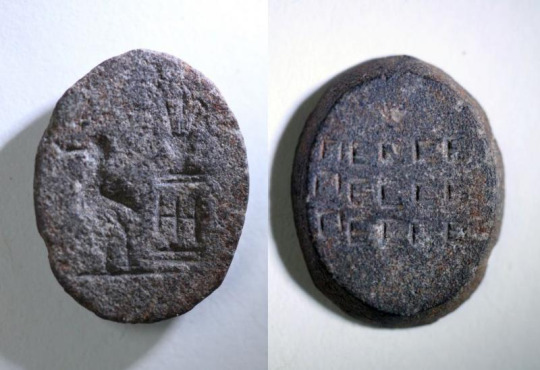

Although most of these magic gemstones were used as jewelry, it is possible that they also had other uses, as part of a ritual to heal a patient or as a physical component for an incantation, such as those with depictions of Harpocrates seated on a lotus the nomina magica Bainchōōōch (Bainchōōōch, Ba of the Shadow, isn't only a vox magica/nomina magica but a God on their own right. PGM aside, Bainchōōōch appears in Pistis Sophia as a triple powered deity that descends onto Jesus, giving him his powers)

An interesting fact is that of the production of magical gemstones during the 17th and 18th centuries of our era. Although the production of these gems continued during the Middle Ages and the Renaissance —irregularly, of course— they reflected the magical and religious reflected the magical and religious practices of their historical context.
This, however, was not the case during the 17th and 18th centuries, where magical gemstones of great quality and sophistication were produced, which not only reproduced the iconographic motifs and logoi of the pre-existing graeco-egyptian magic gemstones, but also introduced new ones. An example of these gems are those with representations of Christ-Osiris or Jesus-Khepri
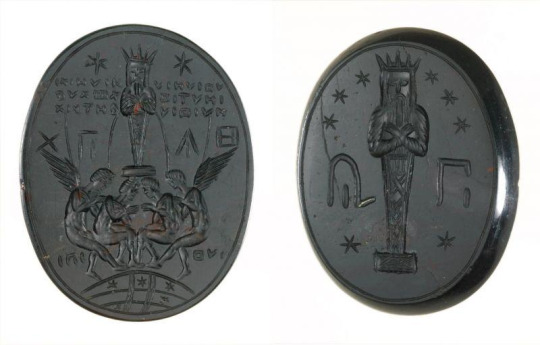
Sources:
Nagy, M. A., (2015) Engineering Ancient Amulets: Magical Gems of the Roman Imperial Period. in D. Boschung and J. Bremmer (eds), The Materiality of Magic (Morphomata 20). Paderborn, 205-240.
Faraone, C. (2018) The Transformation of Greek Amulets in Roman Imperial Times, Filadelfia; University of Pennsylvania Press.
Simone, M., (2005) (Re)Interpreting Magical Gems, Ancient and Modern en Shaked, S., Officina Magica: Essays on the Practice of Magic in Antiquity (IJS Studies in Judaica, vol. 4), Leiden; Brill, 141-170.
Campbell-Bonner Magical Gems Database (http://cbd.mfab.hu)
#magical gemstones#gemstones#PGM#Set#Sutekh#Set-Typhon#Sēt-Typhon#magic#religious syncretism#polytheism#egyptian polytheism#hellenic polytheism#kemetic polytheism#greek magical papyri#Bainchoooch#Thoth#talismans#amulets#talismanic magic
65 notes
·
View notes
Photo

Shaka Bosatsu (Sakyamuni Bodhisattva), 2nd-3rd century
Gandhara
Crystalline schist
Total height: 138.0 cm; height of the statue: 114.0 cm
This standing statue of Sakyamuni Bodhisattva whose eyes somewhat lowered wears a crown over the turban. He raises his right hand in front of his chest in the abhaya mudra (a hand position to bestow fearlessness and bring about a sense of calm), while placing his left hand on his waist.
The kneeling figure engraved on the crown front holds a floral garland. The Bodhisattva wears various accessories such as earrings, necklaces, breast ornament, armlets and wristlets. His lower body is covered by a skirt-like garment and his feet are in sandals. His body weight is mostly supported by the engaged left leg while the right side is the free leg. This standing statue has features unique to Gandhara such as the crown over the turban, the right hand in the abhaya mudra and the left hand on the waist.
This is one of the few known Sakyamuni Bodhisattva statues. Even among them, this statue has an exceptionally high artistic value. After the death of Gautama Siddhartha, prince of the Shakya clan, who lived during the 5th or 4th century B.C.E., his followers symbolized him in various forms such as the podium, awning, dharmachakra, and pipal tree under which he attained enlightenment. Early Buddhists did not create a statue of the Buddha until the 1st century C.E., when the statues of Buddha began to appear concurrently in Gandhara (northwestern Pakistan) and Mathura (northern India). This statue shows that Gandhara works feature Western-style realistic expressions, which attest to the strong influence of the Greek and Roman arts. In Gandhara, stone statues of Buddha reached their highpoint between the 1st and 3rd century C.E.
The material crystalline schist is a metamorphic rock which tends to break into layers and is difficult to cut out a thick layer. Accordingly, the right hand and toes of this work are made of other piece of the same material and fixed to the body with iron clamps.
Collection of the Kyushu National Museum
#sculpture#Gandhara#greco buddhism#stone#schist#2nd century#3rd century#art#art history#cultural amalgam#bodhisattva#Shakyamuni#Kyushu National Museum#religion#figure
14 notes
·
View notes
Text


In October 2023, an American tourist damaged two ancient Roman sculptures that were on view in the archaeology wing of the Israel Museum in Jerusalem. The incident appeared to be religiously motivated, as the man (described as "a 40-year-old Jewish American tourist dressed in religious garb") later explained that he'd attacked the sculptures “because [they] go against the Torah” (specifically the Second Commandment, which states that “Thou shalt not make unto thee any graven image") and were “blasphemous.”
At a remand hearing following the incident, the suspect's lawyer argued that his client was not a religious fanatic, but rather was suffering from "Jerusalem Syndrome," a mental disorder that's said to occur when tourists and religious pilgrims visiting the city (which is sacred in the Jewish, Christian, and Muslim faiths) develop religiously obsessive ideas, most common of which is believing that one is actually a figure from the Bible.
The man was apprehended on the scene and is currently undergoing psychiatric evaluation.
The two damaged sculptures, meanwhile, date to the 2nd century C.E. The first was a marble bust titled "Head of Athena"; the second depicted "a griffin grasping Nemesis's wheel of fate." The museum was hopeful that the works could be restored.
5 notes
·
View notes
Text

For #MosaicMonday check out this neat little lion portrait - cutest ancient Roman lion mosaic ever? 🦁
Mosaic of a Lion in a Roundel, 1st-2nd century C.E. Stone and mortar, 1 1/4 x 21 5/16 in. (3.2 x 54.1 cm). [Brooklyn Museum]
Edited to add more info: This mosaic is from a group dated to the 1883 excavation of Hammam Lif, a Roman era Jewish synagogue in Tunisia, though this is one of a subset which are sytlistically distinct from the rest and may have come from the surrounding area rather than inside the synagogue itself...read more here: The Mosaics of Hammam Lif https://www.jstor.org/stable/3045653
6 notes
·
View notes
Text
Once again, knowing the lyrics from the song on the Seikilos epitaph (dated ~1st–2nd century C.E.) has me picking extreme options on polls.
please do look it up if you dont know the date bc there may be at least an approximate answer and otherwise the last option will completely dominate and this poll will be boring.
and dont be like 'but i cant sing'... just answer the earliest tune you know well enough that you COULD sing it
periods of western classical music provided only for reference
14K notes
·
View notes
Text
History of Dambulla | Research
The Dambulla area is thought to be inhabited from as early as the 7th century B.C.E. since Ibbankatuwa near Dambulla was a prehistoric burial site, where human skeletons were found centuries long before the arrival of the Sinhalese in Sri Lanka.
Right from the beginning of the island’s Buddhist era, solitary monks lived in natural rock shelters. It was said that maybe, some of them had settled down here even before Buddhism was officially introduced by King Devanampiya Tissa in the 3rd century B.C.
Also, during research, I found out that the Dambulla caves are believed to have provided refuge to King Vattagamani Abhaya, known as Valagamba in Sinhala when he had to flee from Anuradhapura after the capital of his kingdom had been sacked by invaders. Reclusive monks living in the Dambulla caves were said to have hidden and protected the king.

When King Vattagamani Abhaya, after 14 years in exile, managed to regain the throne in Anuradapura, he remembered the place that once sheltered him and, out of gratitude, ordered to build a magnificent rock temple at Dambulla.

The rock inscription in Brahmi letters, which is placed at the drip ledge above the cave entrance, is ascribed to Vattagamani, but another short inscription possibly dates back to the reign of Saddha Tissa’s reign, who was Vatagamani Abhaya's father.
Saddha Tissa himself was the younger brother and successor of the most famous Sinhalese king, Duttha Gamani, who ruled in the middle of the 2nd century B.C. The Brahmi characters of the first inscriptions at Dambulla may be even earlier, namely from the very beginnings of the island’s Buddhist era in the 3rd century B.C.E.

Though this was a huge cave temple, historical records remain silent on Dambulla until the 11th century C.E. The Chulavamsa chronicle, a continuation of the Mahavamsa, states that King Vijayabahu, who liberated the heartland of the Sinhalese civilizaton from Chola occupation and became the first Sinhalese king of the Polonnaruwa period, carried out restoration work at Dambulla and donated villages to the incumbents of this temple.
However, most Buddha statues from the Polonnaruwa period are donations of King Nissanka Malla, who on the fourth and last of his pilgrimages exploring his kingdom also visited Dambulla. Like at many other pilgrimage places and like at many buildings in Polonnaruwa itself, Nissanka Malla left a detailed inscription praising his deeds. In this Dambulla inscription, Nissanka Malla claims to have left more than 70 statues in the caves as well as to have ordered to gild some of the Buddha images. It is from this time onwards that Dambulla is called the “Golden Temple”.

Naturally, these "caves" were open rooms under an overhanging rock. Closed rooms were then created only by additional walls. Originally, the monks inhabiting such rock shelters did not construct walls. They only cut drip ledges above the rock shelter in order to prevent rain water from pouring along the rock surface into their abode. The walls were added later on, when the former dwellings were transformed into image houses. What can be seen below the rock surface today, is a white gallery in front of those walls protecting the sacred cave shrines.
0 notes
Text

A Greek philosopher of 1st and early 2nd centuries C.E., and an exponent of Stoic ethics notable for the consistency and power of his ethical thought and for effective methods of teaching. Epictetus’s chief concerns are with integrity, self-management, and personal freedom, which he advocates by demanding of his students a thorough examination of two central ideas, the capacity he terms ‘volition’ (prohairesis) and the correct use of impressions (chrēsis tōn phantasiōn), Heartfelt and satirical by turns, Epictetus has had significant influence on the popular moralistic tradition, but he is more than a moralizer; his lucid resystematization and challenging application of Stoic ethics qualify him as an important philosopher in his own right.
0 notes
Text
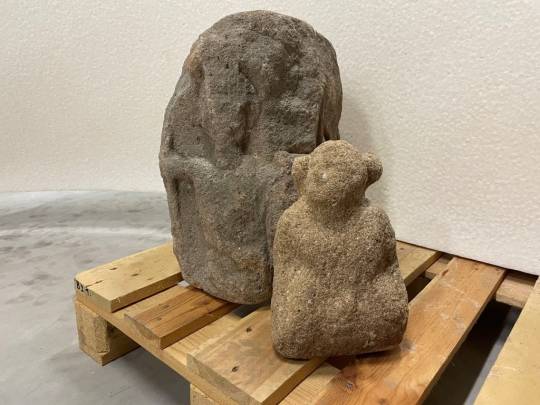
Stone Sculpture of a Roman ‘Giant’ Unearthed at Ancient Fort in Germany
The new find completes another artifact unearthed more than a century ago.
Due diligence in Stuttgart recently unearthed a stone sculpture that was actually part of an ancient Roman monument discovered at the same site more than a century ago. For the past few months, the State Office for Monument Preservation (LAD) has overseen excavations at a plot that had been tapped for the expansion of a local school. From 100 to 150 C.E., this very location hosted an ancient Roman fort, which became a larger settlement 100 years later. Those preliminary excavations paused, a release said, when an employee from the contractor ArchaeoBW spotted “a rather inconspicuous, mud-smeared sandstone.”
“The find turned out to be a 30 centimeter-tall kneeling figure with a human head,” the release says. “You can see how her arms rest on the sides of her upper body and her hands rest on her hips and legs.” It may take some imagination to fully grasp, but the chimera’s lower half shifts from a human torso to a serpent’s tail.
Fortunately, experts have ample historical context to understand the find. “The figure is a hybrid creature of the Roman-Germanic world of gods, a so-called ‘giant,’” said senior LAD archaeologist Andrea Thiel. Comparative analyses found that this figure hails from a larger Jupiter column—a type of religious monument that was particularly prevalent throughout Roman Germania during the 2nd and 3rd centuries.
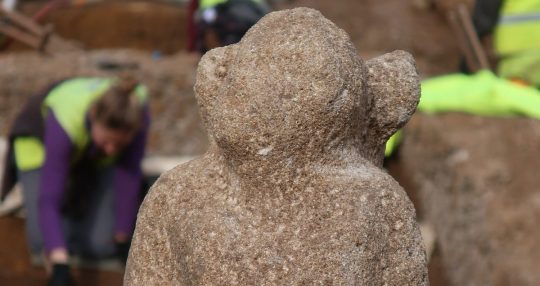
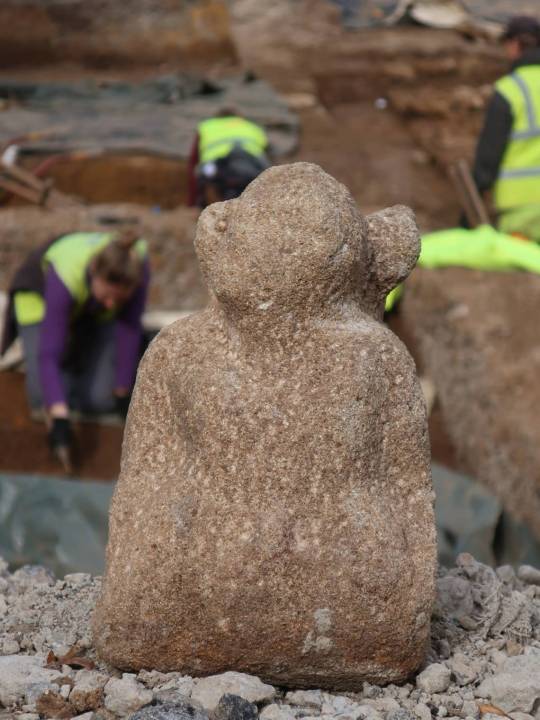
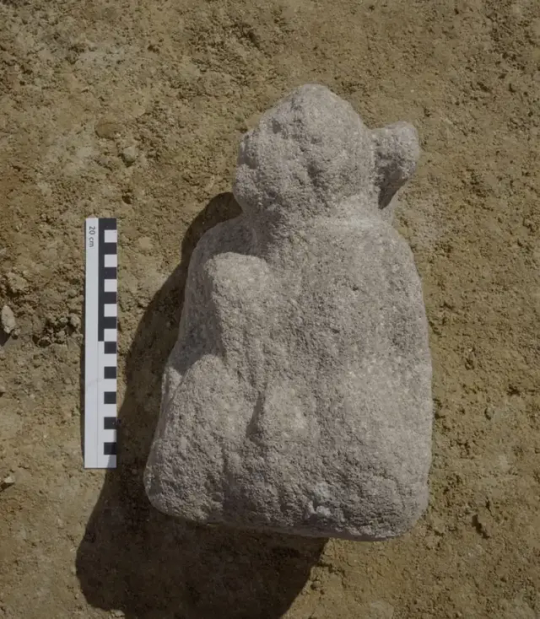
Jupiter columns “combine classical antiquity with probably Germanic beliefs,” Thiel explained. “Jupiter, throwing lightning bolts, rides on his horse over a figure crouching on the ground, usually naked and bearded, as can be seen, for example, in a group from Hausen an der Zaber in the Heilbronn district.” This specific example presented Jupiter as nature’s master, Thiel added.
“Every archaeologist is happy when a beautiful find is made,” he said. But, when the staff at the nearby Württemberg State Museum caught wind of the discovery, they remembered that most Jupiter columns included a Four Gods Stone at their base. “In the depot of the Württemberg State Museum there is a badly damaged Four Gods Stone with depictions of the Roman deities Mercury, Juno, Hercules and Minerva,” said the museum’s head of archaeology, Astrid Fendt. Mercury, Juno, and Minerva formed the Capitoline Triad of Gods. Although Juno wasn’t a fan of Hercules, the Hapsburg family did consider him a legitimate ancestor.
The museum’s Four Gods Stone surfaced in 1908 near a well on the edge of the same lot being excavated. “At the time, a large barracks was being built,” representatives for the city said. The find instigated a more exhaustive excavation. Thiel said that the figure they just found “could also have been lying there, but it probably escaped our colleagues at the time, which is not surprising.”
Crews will continue scouring the site for further artifacts through the end of May. “By then, the entire construction window will have been examined and all finds will have been recovered,” the city said. “We hope that it will soon be possible to show the little giant together with the relief of the gods in a special exhibition.”
By Vittoria Benzine.
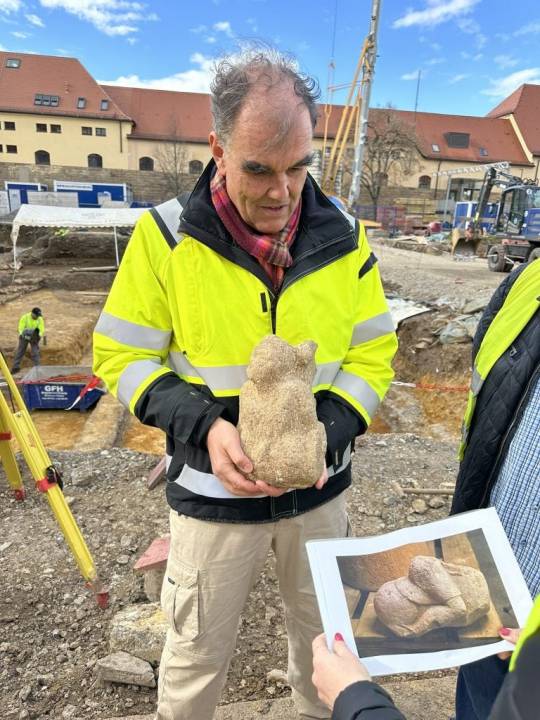

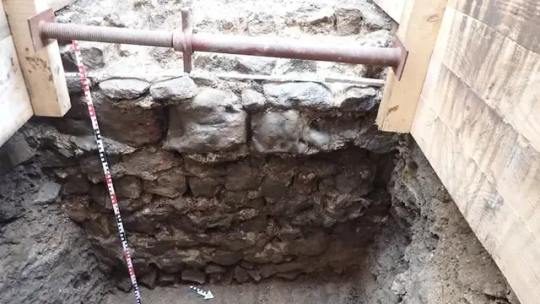
#Stone Sculpture of a Roman ‘Giant’ Unearthed at Ancient Fort in Germany#Stuttgart Germany#stone statue#ancient artifacts#archeology#archeolgst#history#history news#ancient history#ancient culture#ancient civilizations#roman history#roman empire#roman art
24 notes
·
View notes
Text
trick question. i'm gonna show u regardless because it's my blog and i like history. also i'm gay

Egypt, (likely) 2nd century C.E.
do u guys want to see written records of ancient sapphic witchcraft?
7 notes
·
View notes
Photo

Head from a Statue of Apollo Bronze Sofia/Ancient Serdica 2nd-3rd century CE National Archaeological Museum in Sofia, Bulgaria Do Not Repost Photos, Please
#personal#my photography#Apollo#Apollon#Greek gods#Greek mythology#ancient art#ancient statuary#2nd century C.E.#2nd century CE#3rd century C.E.#3rd century CE#ancient Serdica#ancient Rome#Sofia#Bulgaria
385 notes
·
View notes
Photo

req’d by @rocketplane
you go you funky circles
#theshitpostcalligrapher#calligraphy#shitpost#Orbital Mechanics: Drawing pretty circles since 2nd Century C.E.
147 notes
·
View notes
Photo



Head of Aphrodite (Capitoline type), Ephesus (Seljuk, Izmir), 2nd century C.E., marble, Archaeological Museum, Istanbul.
209 notes
·
View notes
Photo

Mosaic of a Gazelle in a Medallion, 1st-2nd century C.E., Brooklyn Museum: Egyptian, Classical, Ancient Near Eastern Art
Size: 1 1/4 x 21 1/4 in. (3.2 x 54 cm) Other: 41 lb. (18.6kg) Medium: Stone and mortar
https://www.brooklynmuseum.org/opencollection/objects/17102
176 notes
·
View notes